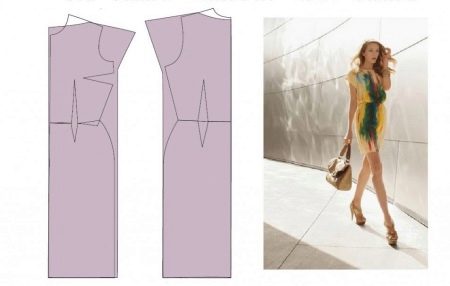Popular dress patterns and a description of the modeling process
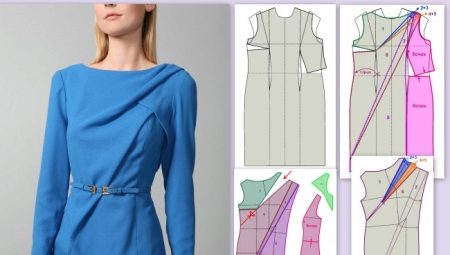
Examining glossy magazines, sometimes there is a feeling of regret that a dress you really liked from a fashion show or from the red carpet, if it can be tried on in a boutique, then you can only wear it to a party in your dreams. Unfortunately, this dress will remain an unrealizable dream unless you arm yourself with a base pattern and model the exact same model.
It is about the principles of modeling that will be discussed further.
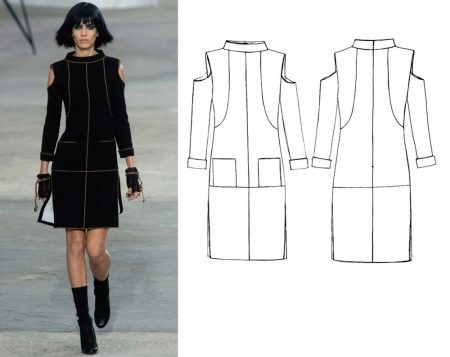
Stages and rules of modeling
The design process begins with a technical drawing and modifying the top or bottom of the main pattern:
- the selected model is divided into correctly constructed parts according to the most accurately taken measurements;
- body features are taken into account;
- allowances are made for seams or for free fit, depending on the chosen style and material.
The modeling ends with cutting and sewing.
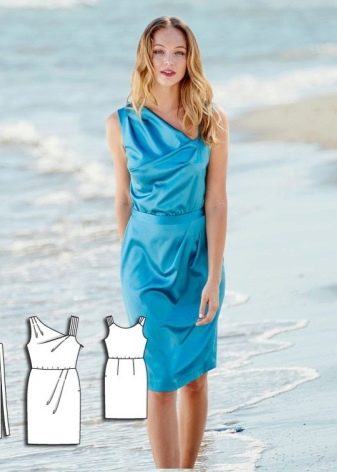
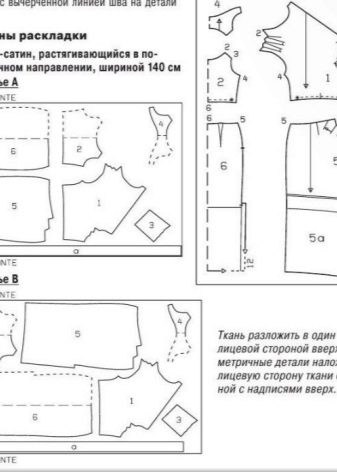
Modeling the bodice by transferring darts
The first step towards modifying the dress is the transfer of the upper bust dart. There are many ways of transferring, for example, in the cut of the armholes, in the waist or neckline, in the middle of the front or in the drapery.
To do this, you need to outline her new position so that she is directed to the highest point of the chest. Further along the lines, the pattern is cut and the old groove is closed, opening a new one.
Below are some common options for carrying a bust dart.
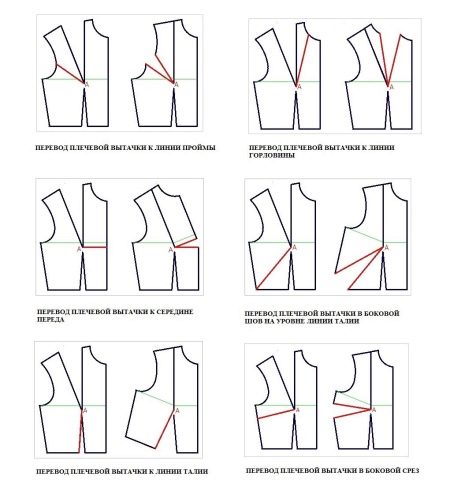
To translate the dart in the shoulder seam into two soft folds, draw two lines on the pattern (in the example, they are indicated by a dotted line) at a distance of 2 cm.Connect the top of the dart with the drawn lines. Close the dart by cutting the pattern along the lines.
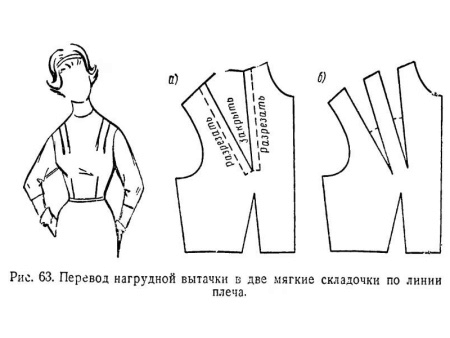
Here is an example of a dress with a cutout on the shoulders, where the undercut is carried into the neckline. Then the sleeve is drawn and the skirt is lengthened.
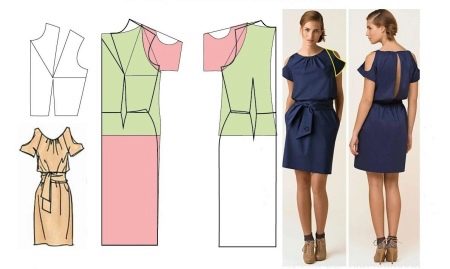
Drapery creation
It is a little more difficult to transfer the dart to the drapery. This is done like this:
- On wallpaper or a sheet of paper, draw a pencil around the outline of the unfolded pattern of the front bodice.
- From the tops of the two lower and upper right darts, draw lines to the left shoulder. Close the darts, leaving only the left breastplate uncovered.
- Parting the darts, draw a new outline of the bodice, smoothly connecting the top points of the left shoulder.
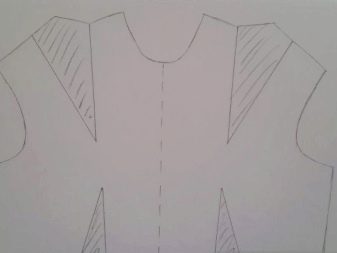
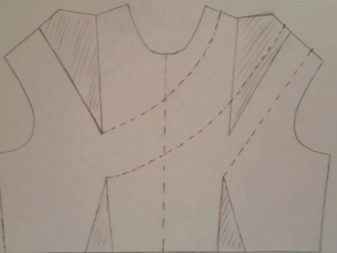
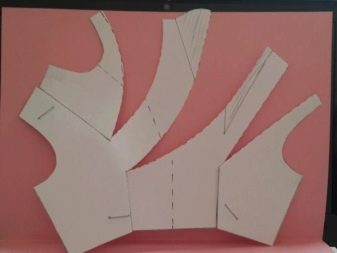
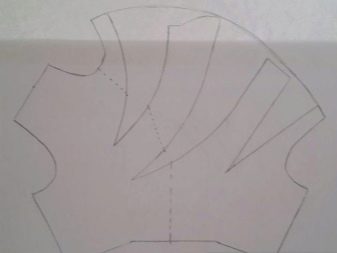
You can translate both darts at once:
- On the unfolded bodice in front, apply shaped bold lines and drapery direction lines.
- On the left half of the top of the darts, move to the upper end of the contour line (i.e. F) and circle their new position.
- On the right half, lift the top of the second waist dart to the top of the chest dart.
- First cut the pattern along the outline, then cut it along the lines you have drawn.
Shaded areas on the pattern - fabric allowances during cutting, which are needed to create draperies.
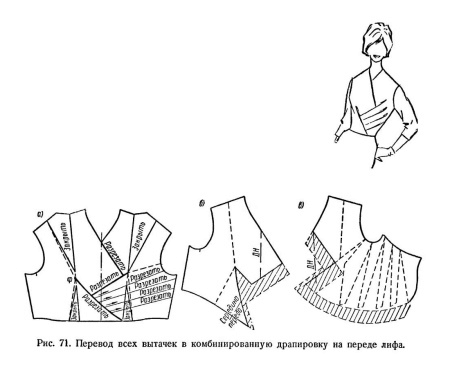
Swing collar
You can create a beautiful drapery on the neckline in different ways, but they start with closing the dart.



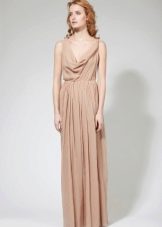
- Measure the length of the shoulder seam, then draw the contoured lines. Cut through them, leaving 1 cm uncut along the shoulder line.
- Expand the resulting details, draw a horizontal line from the highest point of the shoulder line.
- Dress in a one-piece lapel.
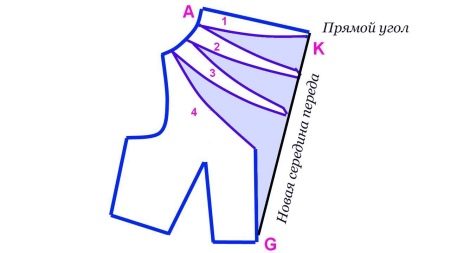
A few more examples of modeling a swing collar.

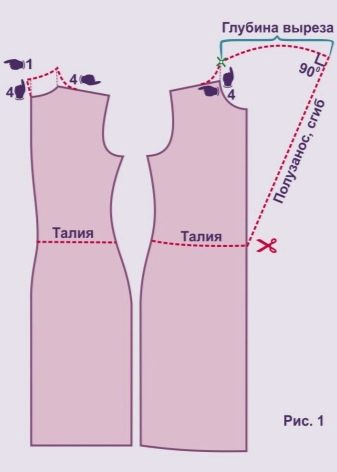
Modeling a fluffy dress
A short dress with a voluminous skirt and an asymmetrical neckline on the bodice will allow you to be a queen at any celebration.
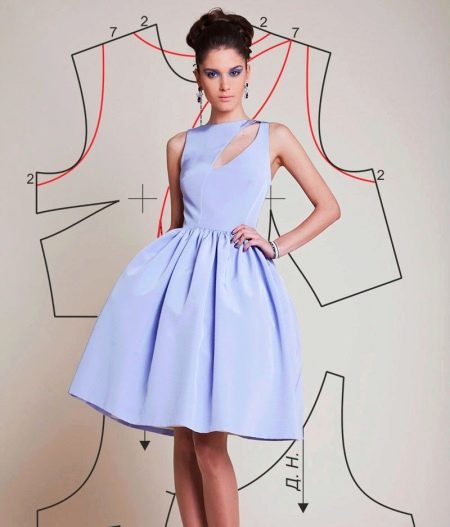
- On the front bodice, transfer the left chest dart to the side seam, and the right one to the waist line.
- Move the left dart at the waist 2 cm to the center.
- Reduce the shoulder length to 7 cm, and make the neckline higher.
- Make the armholes 2 cm deeper.
- Draw a petal cutout and cut along the modeled lines.
- On the back, as on the front, shorten the shoulder and deepen the armhole.
- Draw a V-neckline, 23 cm along the midline.
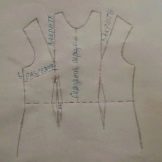
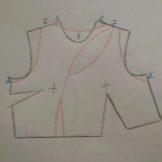
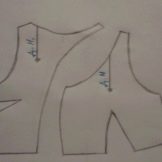
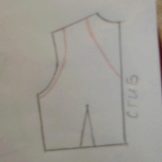
For a skirt, draw a rectangle of the desired length, which will be equal in width to two hips. If the width of the fabric is not sufficient, cut the skirt out of two pieces.
The petticoat consists of two parts:
- 1st - top, 25 cm long and one and a half wide waist circumference;
- 2nd - bottom, with a width equal to two girths of the hips.
The entire length of the petticoat is 2 cm shorter than the skirt.
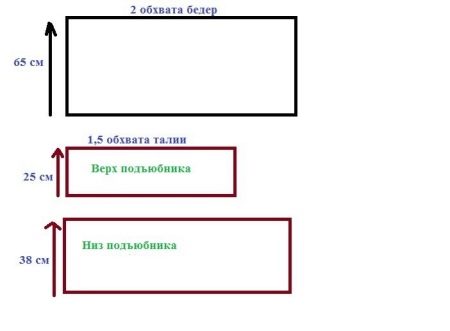
Building patterns for a free dress
A free-cut dress is the option that is created in a hurry, since a beginner in sewing can do it. It does not require a zipper, just a non-stitched area is left along the back for sewing on a button.
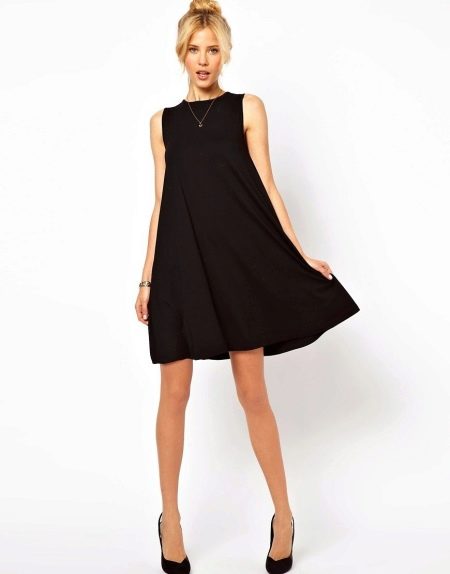
- Mark the back with a dotted line and move it 12-14 cm apart. The splendor of the folds will depend on the angle of inclination.
- Round the bottom line, and make the armhole and neckline deeper.
- On the front of the dress, transfer the bust dart to the waist. The front should be slightly more flared, so 4 cm are added to the lower back and front line.
- The side lines of the two parts are straight lines.
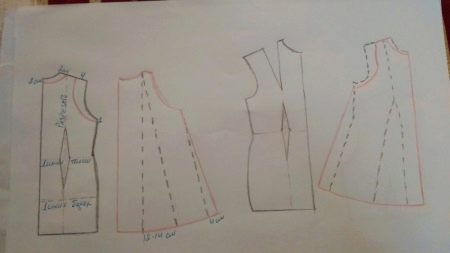
If you want a dress that is short in front and long in the back, on the back pattern created above, measure the desired length in the middle of the fold and draw rounded lines to the side seams.
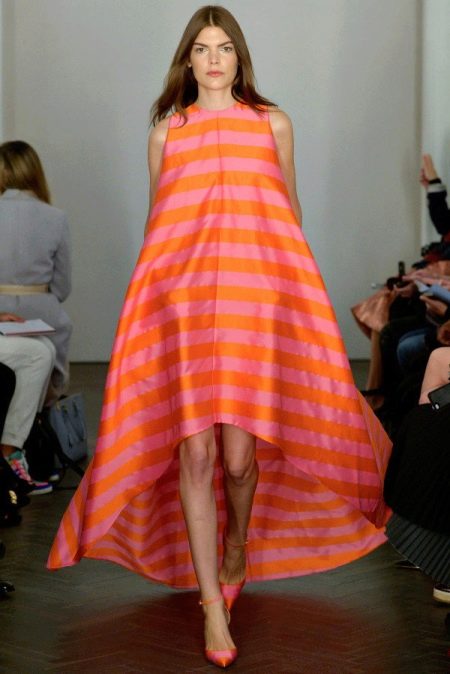
Modeling a short dress - the sun is similar to a real flower, as it allows you to create volume with many folds.
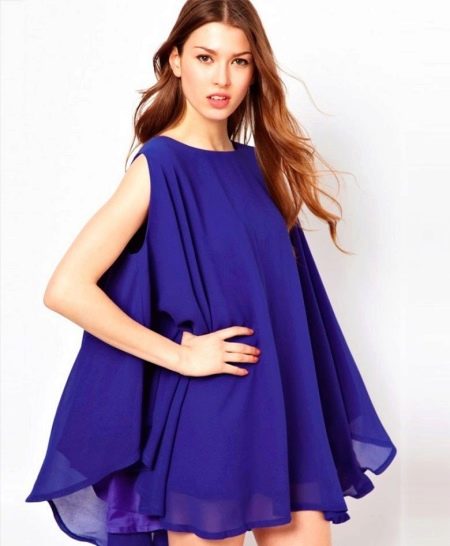
Having drawn a rectangle, build a pattern for the front and back with a shoulder length of about 5 cm. Parts with a fold are cut out.
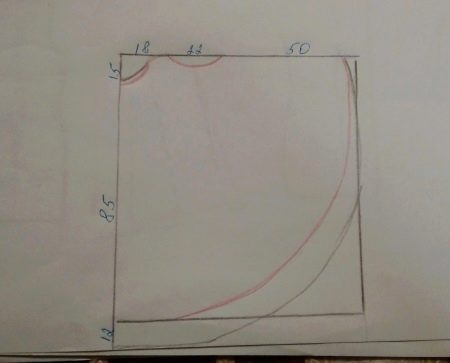
Dior dress
An unusual fitted dress from the catwalk, decorated with a cord and with two pockets will appeal to many.
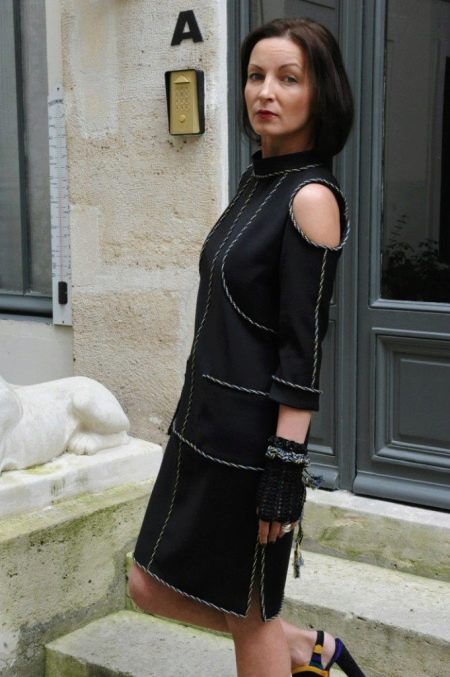
When modeling this dress, you need to take into account some of the nuances:
- The relief from the neckline smoothly goes to the back through the side seam.
- Zipper is inserted in the side sections.
- The sleeve is made with two seams, one of them will hide the cord.
- The sleeves are sewn on. If the fabric is very dense, the lapel of the sleeve can be made from the lining on the inside.
- Patch pockets.
- If the fabric is frayed, immediately process the sections, for example with an overlock.
- The cord is sewn by hand, with blind stitches, on both sides.

A suitable fabric is a dense wool with a small amount of elastane. Lining is also needed.
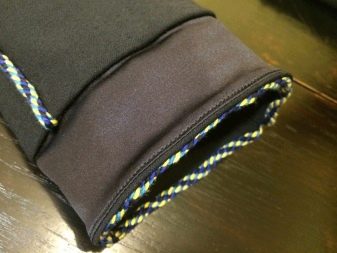
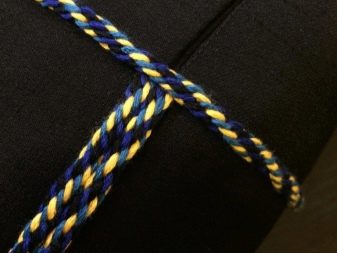

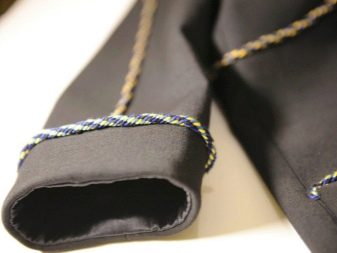
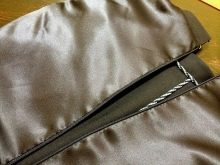
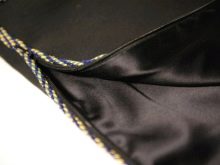
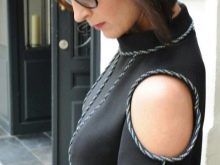
Sundress by Chloe
Summer cotton dress with wide straps with a flying skirt and romantic flounces on the bodice will give you coolness in the hottest time.
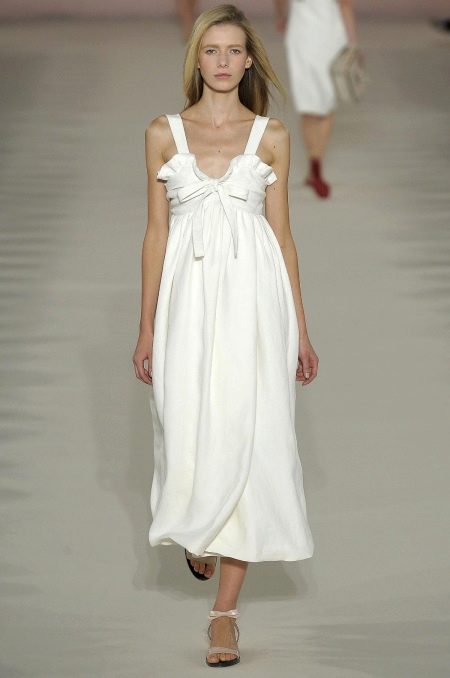
- Model the front bodice and the back detail.
- Cut the straps separately 6 cm wide with allowances and lengthen so that you can sew to the back.
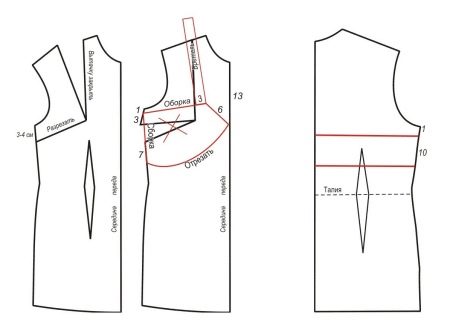
Model the front of the skirt, the back will be the same, only straight at the top.
Ruffles are also needed, which are sewn along the neckline of the sundress. Their length is equal to two lengths of the upper cut, and the finished width is 3 cm.
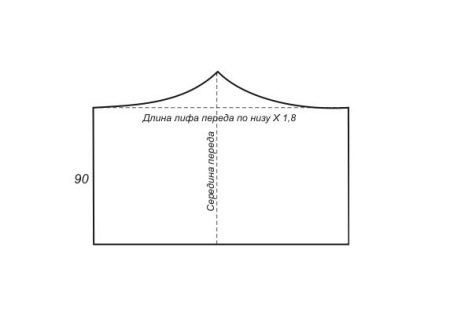
One-piece short sleeve
- Draw a relief through the protruding point along the chest line, then close the chest groove.
- Also remove the waist dart and extend the shoulder line to form a one-piece sleeve.
- It remains to form the line of the neckline.
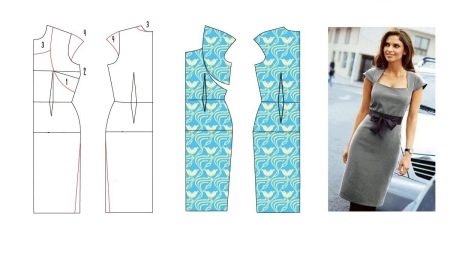
With smell
We are used to the fact that a dress with a wrap has a V-neck, but you can deviate from the standards and draw an asymmetrical one.
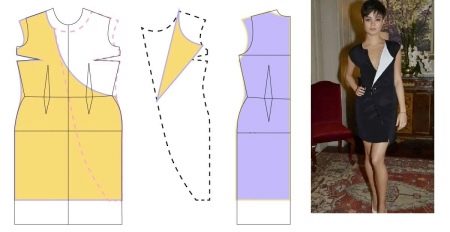
Straight armhole
A chiffon dress with a straight armhole is easily modeled.
